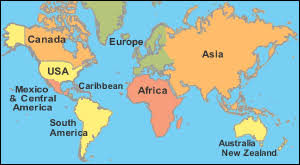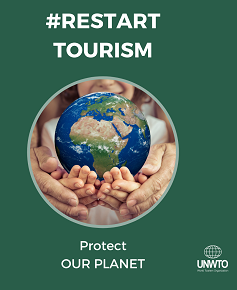Tourism growth in Asia-Pacific and Middle East

The Asia-Pacific (APAC) region is poised for significant tourism growth, with spending on international travel forecast to hit US$2.5 trillion and domestic travel to reach US$4.3 trillion by 2029, according to the latest data from Euromonitor International.
Outbound travel from APAC is projected to grow at a CAGR of 7%, with intra-regional journeys expected to account for 61% of all trips by the end of 2025. By 2029, one in three trips is expected to be outside the APAC region, with 75% of bookings set to be made online.
A high-impact panel discussion at Arabian Travel Market (ATM), brought together top industry minds to explore the future of travel in the APAC region. Moderated by Mingie Wang, Chief Correspondent at China Daily, the panel explored traveller behaviour, digital transformation, and the resurgence of outbound travel, particularly from China, providing fascinating insights into this key global market.
Panelists included Alhasan Aldabbagh, President of APAC Markets, Saudi Tourism Authority; Gary Bowerman, Founder of Check-in Asia; Boon Sian Chai, Managing Director and Vice President of International Markets at Trip.com Group; and Shahab Shayan, Regional Director Asia Pacific at Department of Economy and Tourism.
During the session they highlighted a shift in purchasing decisions across the APAC region, driven by experiential travel, digitalisation, and a growing desire for cultural immersion.
Danielle Curtis, Exhibition Director ME, Arabian Travel Market, said: “More than 60% of travellers are booking trips around concerts and sporting events, while over 40% are influenced by digital platforms such as TikTok. Interestingly, film and television are also playing a significant role, evidenced by a rise in bookings to Thailand following the popularity of The White Lotus.”
According to a recent report compiled by Tourism Economics on behalf of ATM, tourism nights from Asia Pacific and Africa are on track to more than double between 2025 and 2030. The number of tourism nights, specifically from China to the Middle East, is expected to grow by 189% through 2030, and APAC source markets are set to account for the largest share of business nights in the region, with India, in particular, gaining importance.
The Dubai Economic Agenda, D33, is key to ensuring the emirate’s strategic success in APAC markets, with a focus on market segmentation and storytelling. By tailoring messaging for platforms such as the video-sharing website Bilibili and the social networking and e-commerce platform Red Note and leveraging strong air links through carriers like Emirates and FlyDubai, Dubai’s tourism authorities continue to position the city as a relevant, accessible, and aspirational destination for travellers across Asia.
As a newcomer to APAC tourism markets, Saudi Arabia has adopted a highly localised approach, as outlined during the discussion. Recognising the diversity of the region, which comprises 49 distinct countries, tourism authorities in the Kingdom study each source market closely, from dietary preferences to cultural nuances, tailoring travel experiences accordingly. This strategy is supported by partnerships with media, trade, and research bodies to ensure that Saudi Arabia’s offerings resonate authentically with travellers across the region.
Curtis added: “Technology is playing an increasingly pivotal role in travel decision-making across the APAC region, with consumers relying heavily on digital tools, social media, and AI. Mobile-first planning is transforming how travellers research and book trips, although the digital landscape varies significantly from country to country. One constant across the region is the importance of trust, particularly in peer-generated content, which continues to influence traveller choices at every stage of the journey.”
Panelists also cited sustainability as a key consideration for younger generations in the APAC region, with research from Trip.com indicating that 30-40% of Gen Y and millennial travellers are willing to pay more for eco-friendly travel. For these consumers, sustainability extends beyond carbon offsets and environmental protection, encompassing support for local culture and heritage.
Similarly , a new report compiled by Tourism Economics on behalf of Arabian Travel Market (ATM) predicts that by 2030, total tourism spend in the Middle East will be 50% higher than in 2024, generating expenditure of nearly US$350 billion.
The ATM Travel Trends Report 2025 reveals insights into the trends and transformations redefining the travel sector in the Middle East and worldwide, including the surge of business travel, the growth of the luxury segment, and the boom in regional sports tourism. The report highlights exceptional growth in Middle East travel spending, projected to exceed 2019 levels by 54% this year and anticipates an annual growth rate of over 7% from 2025 to 2030.
Danielle Curtis, Exhibition Director ME, Arabian Travel Market, said: “The report’s findings confirm that travel growth in the Middle East is incredibly strong, with annual growth averaging more than 7% through 2030. Bold national visions, game-changing developments, and enhanced connectivity are some of the key factors driving this momentum.”
Underscoring the Middle East’s strong position in global tourism, inbound travel from outside the region is set to grow by 13% annually up to 2030 and outbound business travel forecast to surge at 9% per year.
European source markets make up 50% of all leisure travel to the Middle East, with India and the United Kingdom the top two inbound international leisure source markets. China is also a critical market, ranking third by value with leisure spend expected to increase by 130% by 2030. Furthermore, tourism nights by visitors from Asia Pacific and Africa, are expected to increase by over 100% between now and 2030.
For outbound travel, Saudi Arabia and Egypt dominate regional flows, while Thailand and the United Kingdom lead as preferred long-haul destinations.
The four largest airlines in the region – Emirates, Etihad Airways, Qatar Airways and Saudia – have placed nearly 780 aircraft orders with Boeing and Airbus, representing major expansions to their existing fleets. This significant investment underscores the region’s strategic focus on becoming a global aviation hub and meeting rising passenger demand over the coming decade.
The Middle East’s rise as a global hub for business events is another key highlight of the report, which states that spending on Middle East business travel will grow 1.5 times faster than the global average through to 2030. The region’s strategic location at the centre of Asia, Africa, and Europe supports business and leisure travel, with the latter on a particularly strong trajectory for growth.
The sector plays a vital role in developing the region’s reputation for hosting major events. It is expected to experience the second-fastest rate of business travel growth among all global regions, underscoring the increased potential for combining business and leisure travel, or ‘bleisure’.
Curtis commented: “At ATM 2025, we recognised the industry’s hunger for innovation in travel technology as well as the rising demand for business travel across the region. In response, we launched two dynamic new zones, IBTM@ATM and the Innovation Zone, designed to empower our growing audience to shape the future of travel with the speed and scale our exciting industry demands.”
The region is also witnessing unprecedented growth in luxury and lifestyle tourism, attracting a new generation of high-net-worth travellers, drawn to exceptional Middle East hospitality, curated experiences and premium cultural events. According to the report global spending on luxury leisure hospitality is expected to continue growing briskly reaching over US$390 billion by 2028.
“Travellers drawn to the Middle East tend to spend more on travel overall, nearly 60% habitually spending on luxury experiences while travelling compared to under 40% among travellers who favour other destinations,” added Curtis.
Of the more than 170 luxury hotel properties in the Middle East, nearly 100 are situated Abu Dhabi and Dubai, with 22 currently in development. With several luxury properties in the pipeline among Saudi Arabia’s Giga projects, the region will continue to serve as a preferred destination for luxury and leisure travellers.
Following in the footsteps of the Qatar 2022 World Cup and Dubai Expo 2020, the Middle East region has a proven track record for successfully hosting high-profile entertainment and sports events. According to the ATM Travel Trends report, the strong appetite for sports tourism in the region will lead to a potential growth rate of 63% in the coming years, with the 2034 FIFA World Cup in Saudi Arabia set to continue this momentum.
According to the report, golf, motorsports, football, cycling, and esports are all benefiting from heightened visibility and investment in the region. This surge in sporting and entertainment events is significantly boosting the travel industry, driving increased demand for hotel stays, flights, and related services, creating a ripple effect that supports broader tourism growth.
ATM is the leading international travel and tourism event held annually in Dubai. It plays a vital role in shaping the future of global travel. Held at the Dubai World Trade Centre, the 2025 edition welcomed over 55,000 industry professionals from 166 countries, achieving year-on-year growth of 16%. The next edition will take place from 4-7 May 2026. Courtesy – hub.wtm.com
19 June 2025














